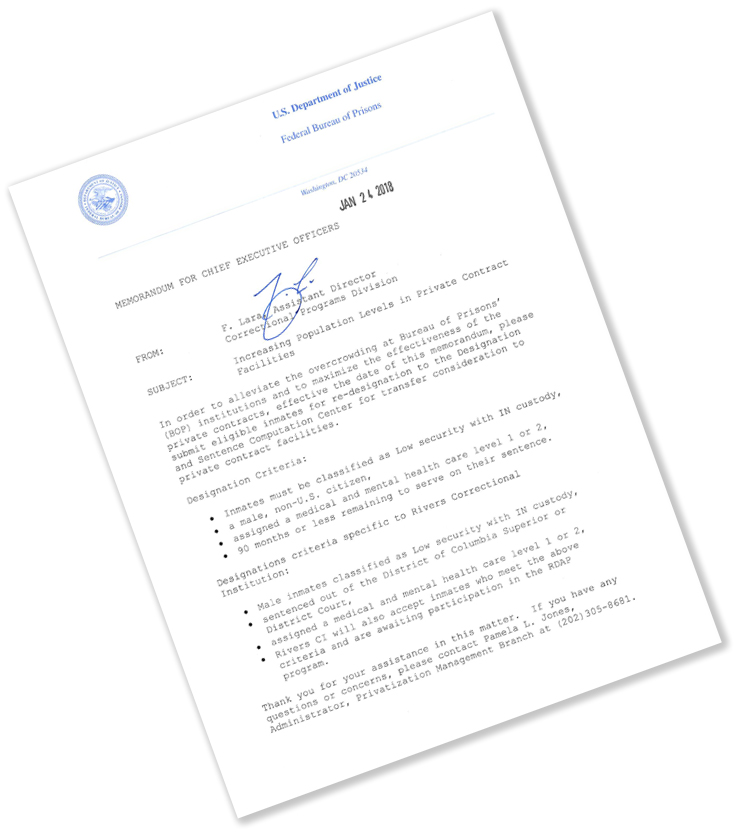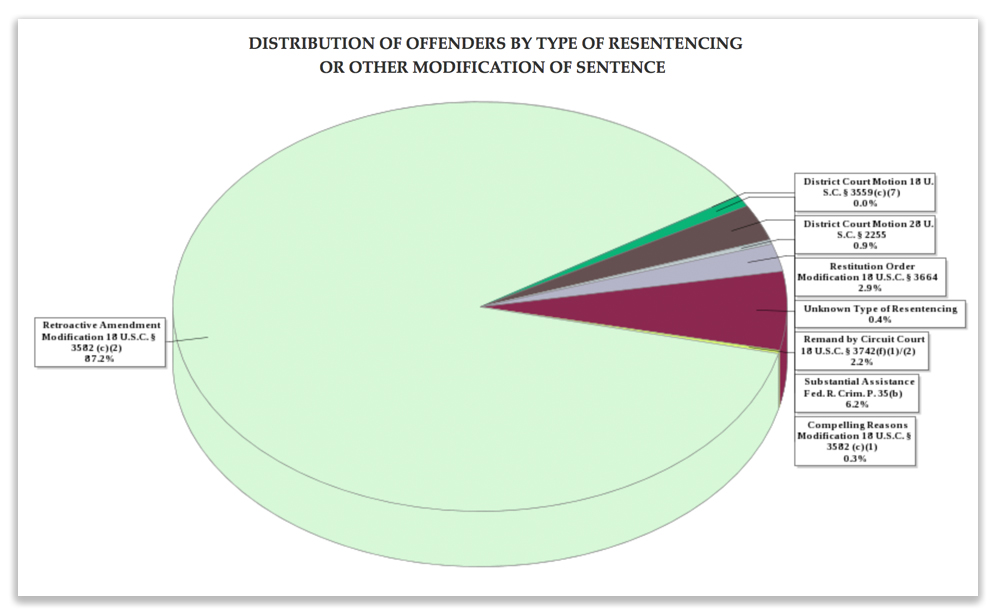We post news and comment on federal criminal justice issues, focused primarily on trial and post-conviction matters, legislative initiatives, and sentencing issues.
BOP DIRECTOR SAYS THERE’S NOTHING BETTER COMING ON HALFWAY HOUSE
 Talk about violence directed at BOP employees… Director Mark Inch was beaten up pretty well last week when he delivered his largely fact-free report on the BOP to the House Subcommittee on Crime, Terrorism, Homeland Security, and Investigations, with the chief executive at the BOP Coleman complex likely to have been taking it on the chin as soon as Inch could get out of the hearing room door.
Talk about violence directed at BOP employees… Director Mark Inch was beaten up pretty well last week when he delivered his largely fact-free report on the BOP to the House Subcommittee on Crime, Terrorism, Homeland Security, and Investigations, with the chief executive at the BOP Coleman complex likely to have been taking it on the chin as soon as Inch could get out of the hearing room door.
We thought we were the only ones who found Director Inch’s obsequious and bureaucratic delivery tedious, but it became clear during his nearly 2-hour session that the Committee members were a little frustrated at Inch’s habit of turning every answer into a pretzel and coming up short on meaningful data about his agency.
Congressman Jamie Raskin (D-Maryland) asked about the cancellation of 16 halfway house contracts, and demanded Inch square that with the shortage of halfway house bed space nationwide. Congressman Jerrold Nadler (D-New York) cited the prior BOP director’s complaint that it is “scarce and expensive” to put people in halfway house, and demanded that Inch to explain the cancellations in light of the scarcity.
 In response to a question from Rep. Steve Chabot (R-Ohio) on BOP halfway house plans, Inch said the BOP spent $350 million on halfway house at 230 centers nationwide last year. Of the approximately 44,000 inmates released annually, he said, 80% get halfway house or home confinement placement. Inch said that reentry centers are “mostly important for inmates at the high end” of sentences.
In response to a question from Rep. Steve Chabot (R-Ohio) on BOP halfway house plans, Inch said the BOP spent $350 million on halfway house at 230 centers nationwide last year. Of the approximately 44,000 inmates released annually, he said, 80% get halfway house or home confinement placement. Inch said that reentry centers are “mostly important for inmates at the high end” of sentences.
In 2017, Inch said, the BOP overspent for halfway house and exceeded contractual limits on some locations while others were underused. He anticipated the halfway house placement will remain unchanged in 2018. “The challenges I look at – the constellation of our residential reentry centers is two things, is to the extent of how far out it can spread and the cost that is associated with it – our goal this year in 2018, is to have very clear usage figures data against the ascribed budget so I can make very logical budget requests in the future.”
Stripped of bureaucratic–speak, that means nothing is going to change in BOP halfway house placement any time soon.
 The representatives, who have been hearing loud complaints from their BOP employee-constituents, also pushed Inch hard on augmentation, the BOP practice of using noncustody people like nurses, teachers and front-office workers in CO positions. Inch assured the Subcommittee that all of the 6,000 BOP positions being eliminated this fiscal years were vacant, and not the reason for augmentation. The director told the Subcommittee that “a lot” of the BOP staffers used for augmentation had started their careers as COs, and thus were well qualified to fill in on custody positions.
The representatives, who have been hearing loud complaints from their BOP employee-constituents, also pushed Inch hard on augmentation, the BOP practice of using noncustody people like nurses, teachers and front-office workers in CO positions. Inch assured the Subcommittee that all of the 6,000 BOP positions being eliminated this fiscal years were vacant, and not the reason for augmentation. The director told the Subcommittee that “a lot” of the BOP staffers used for augmentation had started their careers as COs, and thus were well qualified to fill in on custody positions.
Despite union protests and Federal Labor Relations Authority rulings in favor of BOP employees, the Director insisted that augmentation was safe for employees. “You say it’s not a dangerous situation?” Rep. Michael Johnson (R-Louisiana) asked Inch incredulously. “I’ve met with a number of these [BOP] people from my home state of Louisiana, and they’re not comfortable with this situation.”
At one point in the hearing, Inch was blindsided by charges the BOP was banning books, an allegation arising from a policy being adopted by the Coleman, Florida, federal prison complex. The Coleman policy, which goes into effect next week, bans purchase of any books except those bought through the commissary for a 30% surcharge over list.
 Congresswoman Karen Bass (D-California), who apparently believed the policy was a BOP ban on books, asked the Director how he could adopt such a policy. Inch seemed nonplussed, saying he was unaware of the Coleman policy and would look into it. He suggested Rep. Bass’s understanding of the policy might be a misperception, leading her to snap back, “I hope you follow up with Coleman, because this does not seem to be a misperception, this seems to be a directive.”
Congresswoman Karen Bass (D-California), who apparently believed the policy was a BOP ban on books, asked the Director how he could adopt such a policy. Inch seemed nonplussed, saying he was unaware of the Coleman policy and would look into it. He suggested Rep. Bass’s understanding of the policy might be a misperception, leading her to snap back, “I hope you follow up with Coleman, because this does not seem to be a misperception, this seems to be a directive.”
In point of fact, the Coleman policy is a book ban of sorts, because every inmate book request is filter through a BOP employee, who could simply refuse to honor a request for a book the BOP felt was inappropriate for whatever reason.
We suspect the Coleman warden, who appears to have violated the sacred bureaucratic rule of “don’t make your boss look bad,” got an unpleasant call from the Director about five minutes after the hearing ended.
House Judiciary Committee, Subcommittee on Oversight, Oversight of the Federal Bureau of Prisons (Apr. 17, 2018)
– Thomas L. Root





















